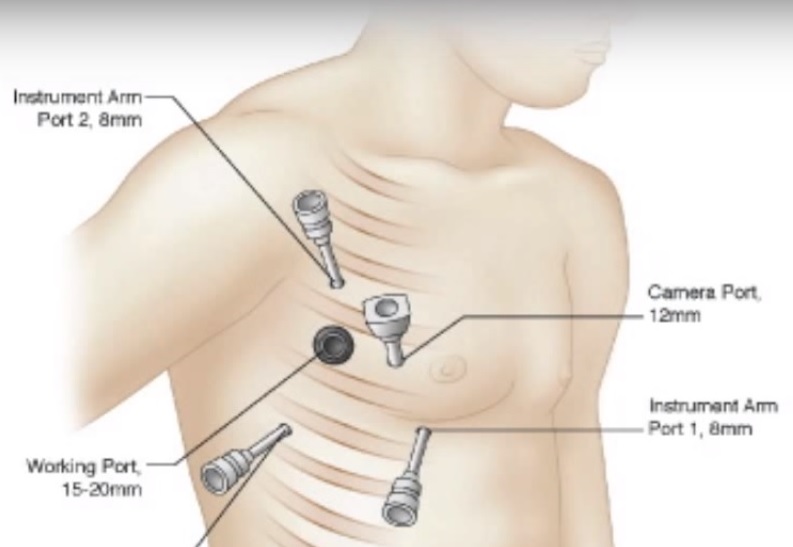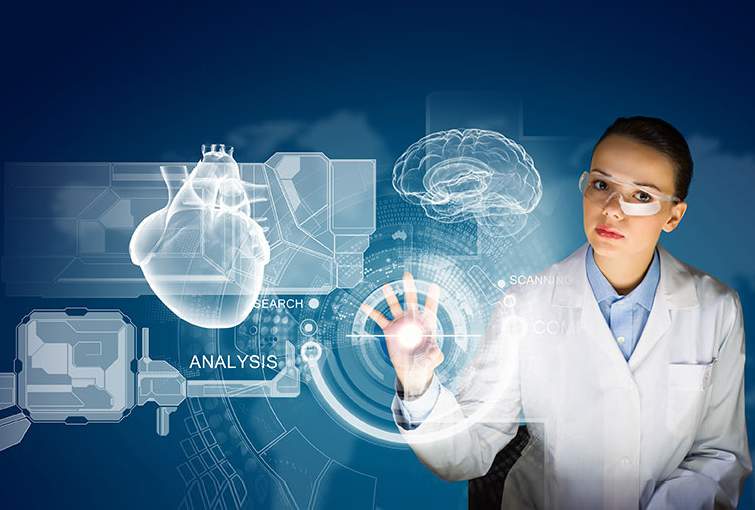This article isn’t just about the application of analytics in healthcare. It is about how healthcare industry is harnessing analytics to evaluate the latest innovations in healthcare technology. Such as evaluation can help leaders in healthcare make policy decisions about embracing the new technology.
Techno-medical innovations
Over the last couple of decades, there have been quite a few noteworthy technological advancements in healthcare industry. For example, Electronic health records (EHRs); HAART for HIV combined drug therapy; minimally invasive surgery; needle-free injection technology; MRI, genomics; and non-invasive diagnostics.
These innovations are extraordinary because they are disrupting the way healthcare professionals can diagnose and treat patients in a better, faster, and safer way.
One such technological advancement was endoscopic surgery or minimally invasive surgery. This innovation revolutionized the way healthcare surgeons perform surgeries now. Knowledge@Wharton once ranked it tenth among the “Top 30 Innovations of the Last 30 Years” list.
The conventional surgical procedures were highly invasive, riskier, painful, and time-consuming. They required long post-operative hospital stays and longer recovery times. Thanks to technological innovations, today, patients have an option of choosing either robotic surgery or endoscopic (non-robotic) surgery. These new methods result in much shorter recovery times, less pain, and dramatically reduced scarring. This augurs well for patients who are looking to return back to work quickly.
Minimally Invasive Cardiac Surgery
Many hospitals and cardiac care centers worldwide are evaluating the efficacy of the newer – minimal invasive approach – for specific cardiac surgical procedures.
The conventional cardiac valve repair/replacement surgery involved opening up a patient with an 18 to 20 cm vertical incision at the sternum. The newer minimally invasive procedure involves approaching the heart through a much smaller horiontal incision. This incision (or a key-hole) under the right breast is only up to 7cm.
The new cardiac procedures are more complex for surgeons to perform as the area of access (to heart) narrows down drastically compared to the wider access that the conventional surgery allows. Nevertheless, the new procedure is believed to more beneficial. The benefits involve less bleeding, lower risk of infection, faster recovery times, and lesser expenses for patients.

Analytics in Healthcare – A Case Study
Our client# had been studying the effectiveness of the new method of cardiac surgery compared to the conventional way of performing the same procedure. The study allowed them to enroll patients for one of the two types of procedures. This enrolling depended upon a number of physiological and health factors of each patient.
They performed the study over a period of three years and recorded the observations. The observed data included the type of procedure performed along with a number of associated output parameters such as hospital stay duration and pain levels experienced, among many others. We chose a power of 80%; we randomized the data for detailed analysis.
Our analysts collaborated closely with the client to understand the nature and significance of each output parameter. We identified the right statistical tools and techniques to be applied based on the nature and type of the data to analyse. The statistical significance level for the analyses 5%.
The results were examined in detail both for statistical and clinical significance. We cross-checked the statistical test results quantitatively as well as qualitatively with subject matter experts for completeness and correctness in order to arrive at unambiguous conclusions. Each conclusion shared with the client was solidly backed with data. The results would help them make a fact-based policy decision to embrace the newer procedure for their center.
Going beyond the statistical analysis, a predictive model was developed based on the results of the initial study. The predictive model would assist the client in determining the right approach to adopt for a future patient depending upon a number of factors. This is expected to improve the cardiac procedural outcome at the healthcare center.
Application of analytics in healthcare
Predictive modeling using machine learning is a powerful technique that helps in forecasting a probable outcome based on empirical data. Predictive modeling and analytics has tremendous potential in healthcare to improve the overall quality of patient care services. Analytics has shown promise to all the constituents involved in the healthcare sector viz. patients, physicians/surgeons, hospitals, pharmaceutical companies, insurance companies, and public health professionals.
Patients – more aware of self-health
Some of the uses of predictive analytics include increased accuracy of diagnosis, early detection of a disease condition in at-risk patients using genomics, and evidence based medicine. In general, with the proliferation of wearables, patients can be more aware and assured of their own physical conditions.
Physicians/Surgeons – increase diagnostic accuracy
When a patient is visiting a physician complaining chest pain, it is often difficult for the physician to know whether the person needs hospitalization. If the doctor is using a well-tested predictive diagnostic system, in which he can accurately input the patient’s physical and clinical condition, then the system can assist the physician make an informed judgement.
On the treatment side, a physician can follow a patient’s data (or EHRs) for many years and can prescribe a treatment regime tailored to the patient’s specific condition. As a result, this fact-based treatment reduces the probability of causing any major side effects.
Hospitals – improve patient care with low mortality rates
Like the case study narrated above, predictive analytics can help hospitals and research centers in evaluating the efficacy of various procedures and treatments. This can help in improving the mortality and morbidity rates during the post-op period.
Pharmaceutical Companies – bring new more effective drugs to market faster
Researching a new drug and conducting a clinical trial for the new drug are two very lengthy, costly and resource intensive processes for pharma companies. The R&D process for pharma companies can become more productive by leveraging the power of machine learning to systematically test the mixtures of existing proven molecular components. This may help in identifying new drugs with higher probability for success. Moreover, predictive modeling can be implemented to test the effectiveness of new drugs in a faster and less expensive manner. This will not only help them bring the drug to the market more quickly, but will also reduce the overall healthcare costs per patient significantly.
Insurance Companies – reduce cost of insurance
Healthcare insurance service providers can implement predictive analytics models to better forecast insurance cost for individuals. Presently, the insurance cost is more a function of a person’s age, current medical condition, and the ‘plan’ they are opting for.
Now, advancements in medical technology have made it possible to make genetic information and other healthcare related data easily available. Insurance providers can make use of this information to arrive at future medical expenses for a person. Also, they can make more informed decisions about the insurance costs associated with that individual. This will be a more realistic assessment of insurance needs for a person. Thus, it will be beneficial to both sides in terms of provisions to be made.
Public Health (Professionals)
The World Health Organization defines public health as all privately and publicly sponsored measures to prevent disease, promote health, and prolong life among the population as a whole. Its activities aim to provide conditions in which people can be healthy and focus on entire populations, not on individual patients or diseases. Here, analytics can be implemented in predicting early detection of pandemics and flu outbreaks. GoogleFlu was a project which estimated Flu and Dengue fever based on search patterns. While the project is not publishing anymore, empirical data is available for research purposes.
Conclusion
While application of analytics in healthcare is possible in all spheres of patient care, it is more about leveraging the power of analytics in rapidly evaluating the true value of techno-medical innovations for human benefits. Analytics makes it possible to make fact-based decisions about adopting it. Moreover, it also helps internalizing these latest technological advancements that promises to help us lead a quality life for a few years more.
References:
http://knowledge.wharton.upenn.edu: a-world-transformed-what-are-the-top-30-innovations-of-the-last-30-years/
http://pharmajet.com: significant medical innovations of the past 20 years
Cover image credit: ©Pharmajet
# Client names and other details are confidential
Related Posts:
- What does Digital Maturity really mean
- e-Retail Innovations – How e-Retail is Changing?
- Is analytics all hype and no substance?
<– Top Analytics Trends 2016 for SMBs
Top Analytics Trends 2017 – An INFOGRAPHIC –>
Do follow Veravizion on LinkedIn, Twitter, Facebook, or Google+ to receive easy updates.
You can also subscribe to our blog – Our Perspectives – to receive interesting articles and insights in email. We would love to read your perspectives and comments on that.
